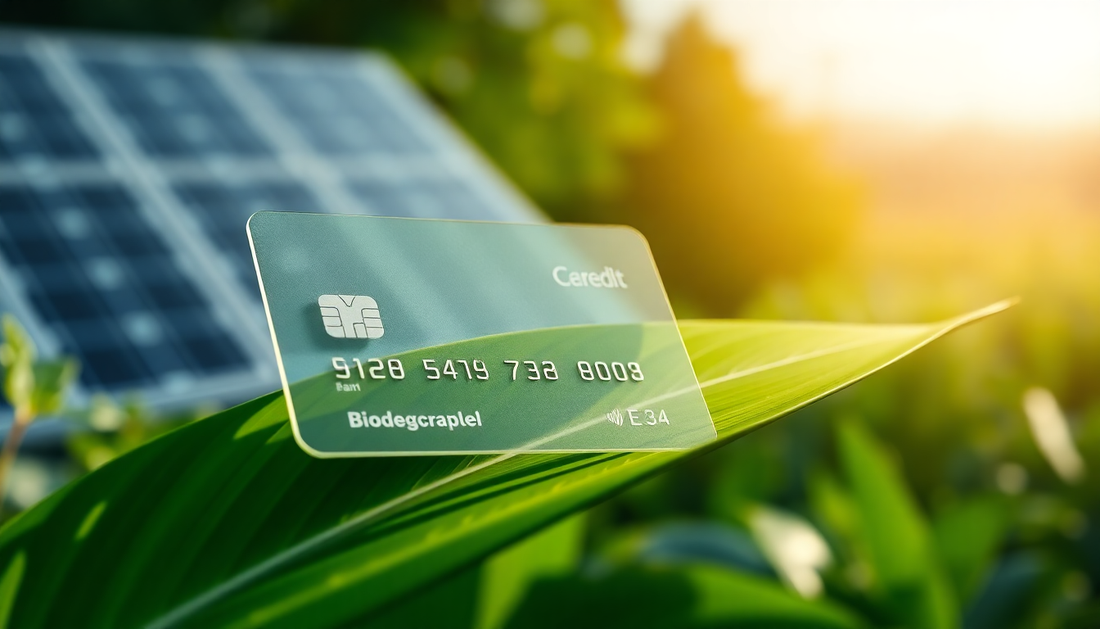In an era marked by growing environmental consciousness, the financial industry is undergoing a transformative shift towards sustainability. As consumers become increasingly aware of the impact of their choices, the demand for eco-friendly financial products has surged, paving the way for a new era of sustainable banking. Among the most promising developments in this realm is the emergence of eco-friendly credit cards, which offer a compelling solution to the environmental challenges posed by traditional plastic cards.
The Rise of Environmental Consciousness
The global community has witnessed a remarkable awakening to the pressing environmental issues facing our planet. From the alarming effects of climate change to the staggering accumulation of plastic waste, individuals and organizations alike have recognized the urgent need to adopt more sustainable practices. This heightened awareness has permeated every aspect of our lives, including the financial sector, where consumers are now demanding products that align with their environmental values.
The Environmental Impact of Traditional Credit Cards
Conventional credit cards, predominantly made from plastic, have long been a staple in the financial landscape. However, the environmental toll of these ubiquitous instruments has become increasingly apparent. The production of plastic credit cards requires the extraction and processing of fossil fuels, contributing to the carbon footprint of the industry. Moreover, the disposal of these cards at the end of their lifespan often leads to their accumulation in landfills and oceans, exacerbating the global plastic pollution crisis.
Eco-Friendly Credit Card Materials
In response to these concerns, innovative companies have developed a range of eco-friendly credit card materials that offer a more sustainable alternative. These materials include biodegradable options, such as plant-based plastics and paper-based composites, as well as recycled materials like reclaimed ocean plastic and post-consumer waste. By leveraging these innovative solutions, financial institutions can significantly reduce the environmental impact of their credit card offerings.
The Benefits of Eco-Friendly Credit Cards
The adoption of eco-friendly credit cards presents a multitude of benefits, both for consumers and the environment. By choosing these sustainable financial instruments, individuals can actively contribute to the reduction of carbon emissions and plastic waste, aligning their spending habits with their environmental values. Moreover, the use of eco-friendly credit cards can serve as a powerful catalyst for consumer engagement, inspiring a broader shift towards more sustainable financial practices.
Technological Innovations in Eco-Friendly Credit Cards
The development of eco-friendly credit cards has been driven by advancements in material science and manufacturing techniques. Researchers and engineers have explored a wide range of innovative solutions, from advanced biodegradable polymers to cutting-edge recycling processes. These technological breakthroughs have not only improved the environmental performance of credit cards but have also ensured that they maintain the durability and functionality expected by consumers.
Market Trends and Consumer Demand
The growing consumer demand for sustainable financial products has been a driving force behind the rise of eco-friendly credit cards. Millennials and Gen Z, in particular, have emerged as key advocates for environmental responsibility, and their preferences have significantly influenced the financial industry's response. As a result, major credit card issuers and banks have begun to incorporate eco-friendly options into their product portfolios, catering to the evolving needs and expectations of their customer base.
Challenges and Limitations
While the shift towards eco-friendly credit cards presents a promising path forward, it is not without its challenges and limitations. The production costs associated with sustainable materials and manufacturing processes can be higher than traditional methods, posing a potential barrier to widespread adoption. Additionally, ensuring the long-term durability and performance of eco-friendly credit cards remains an ongoing concern, requiring continuous research and development.
The Future of Sustainable Banking
As the financial industry continues to adapt to the growing environmental consciousness, the future of sustainable banking looks increasingly bright. Eco-friendly credit cards are just the beginning of a broader transformation, as financial institutions explore innovative ways to integrate sustainability into their core operations. From the development of green investment products to the implementation of carbon-neutral banking practices, the industry is poised to play a pivotal role in the global transition towards a more sustainable future.
Conclusion
The emergence of eco-friendly credit cards represents a significant step towards a more sustainable financial landscape. By embracing these innovative solutions, consumers can make a tangible difference in reducing the environmental impact of their spending habits. As the demand for sustainable financial products continues to rise, the financial industry must respond with a steadfast commitment to innovation and environmental stewardship. Together, we can shape a future where eco-friendly credit cards are the norm, not the exception, paving the way for a greener and more prosperous tomorrow.

